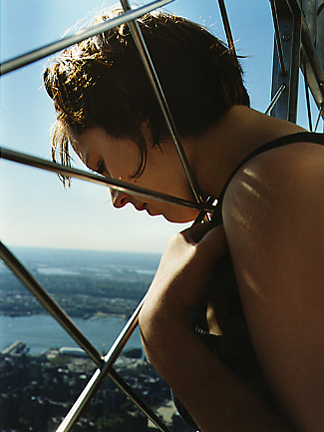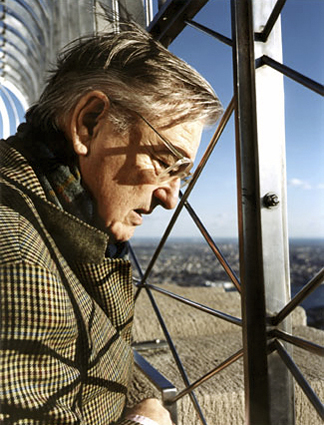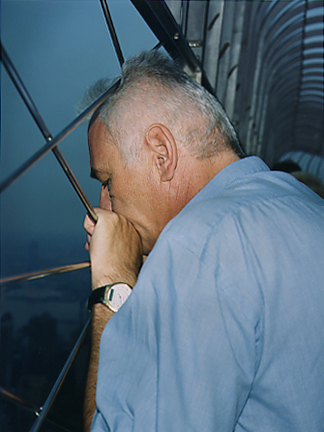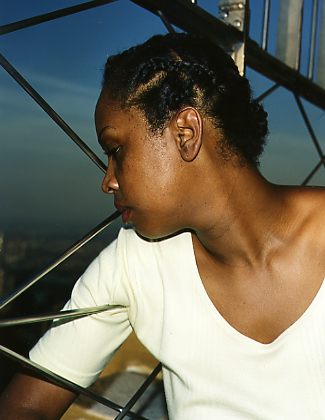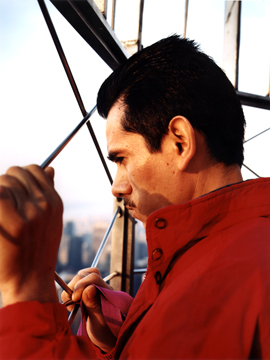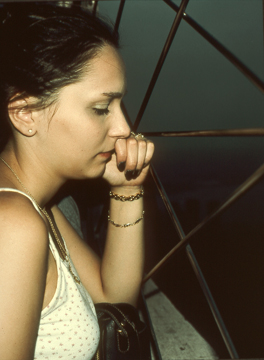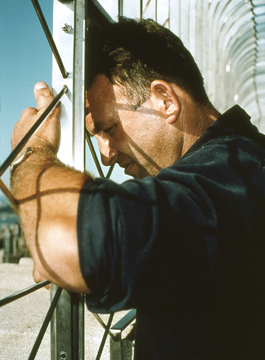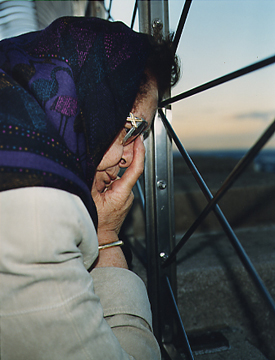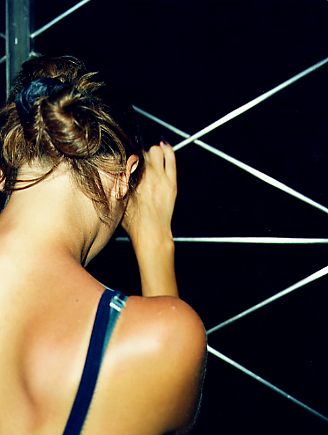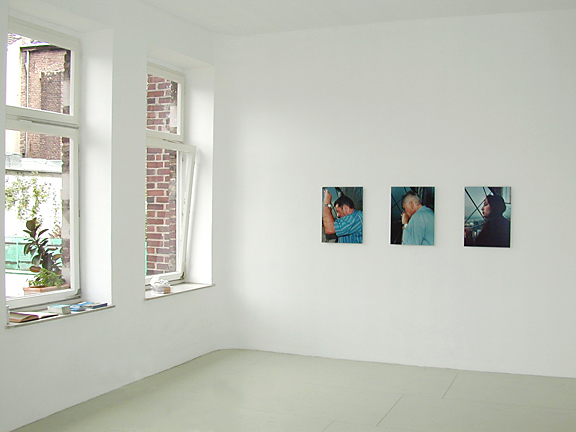EMPIRE
EMPIRE, 2000. 20 c-prints (mounted on aluminum) & Duraclear window installation.
EMPIRE, 2000
20 c-prints (mounted on aluminum) & Duraclear window installation
Installation views and selected images, Galerie Otto Schweins, Cologne (2000)
EMPIRE reverses the traditional photographic view taken at the top of New York’s Empire State Building: instead of documenting city vistas from the 86th floor observation platform, the camera is turned onto the viewers themselves. Elevated by height, pedestrians are transformed into voyeurs. Set against the backdrop of the deck’s metal fence – a protective barrier to keep people from falling or jumping – individuals are captured in moments of quiet, private contemplation. A serial work composed of twenty images, EMPIRE functions as a collective urban portrait, a view of a city that remains unseen except as it is reflected in the faces of its humanity. Accompanying the photographs, a Duraclear (transparency) image of sky and fence taken atop the Empire State Building is installed in a window. During the day, sunlight projects the image into the gallery, casting it around the walls and the floor. At night, with the gallery lit from inside, this image becomes visible to the passerby on the street.
______________________________________________________________
EMPIRE
by Noah Baumbach, 2000
Madeline Djerejian brings us to the top of the Empire State Building but doesn't show us the view. By shutting out the city landscape, by directing focus onto the people who look out over New York's vast panorama, we're presented with a much broader view. We're presented with the notion of looking itself.
No one is concerned with the proper way of looking. These people are men and women of all ethnic groups, ages, a cross section like an 80's Benetton ad. They even seem to dress similarly, sharing a GAP palette of mostly solid colors or checks. But each is highly individual. Some faces are more expressive than others, most are in profile, some are hidden from us, but in each case personality is revealed in the manner in which they look.
These lookers seem to have forgotten what they are looking at, or where they are: they rest against the fence, becoming almost intimate with its metal bars. Bars, secured to keep people from falling or jumping, allow these people to interact with the untouchable view. Some keep their distance; others find ways to try to break free, intertwining their bodies with this barrier, perhaps resentful that they can't access the view without being restrained. Foreheads lean, heads poke out, hands clutch, mouths touch.
They all look down, but are they really looking at anything in particular? They are caught in moments of quiet introspection: there is so much to see, so much to deal with, and yet it's almost too much to take in. It's as if they needed to travel 86 stories up to have the entire Metropolitan area in front of them just so they can properly take a look inside. We're reminded that the way we look at the world often has much more to do with what's going on inside us than what we're seeing. Like Wim Wenders' subjects in Wings of Desire, one can imagine each person's murmuring thoughts in voice-over. And so what do we bring to these photographs? What is our inner monologue as we take in this view?
Noah Baumbach is a filmmaker based in Los Angeles and New York City.
______________________________________________________________


